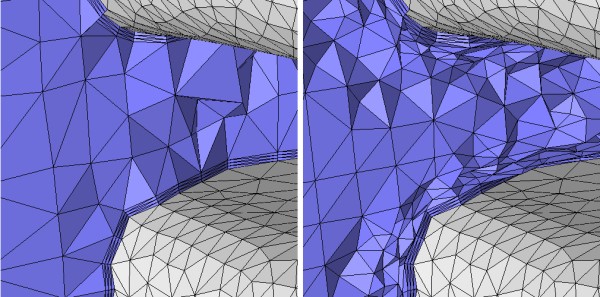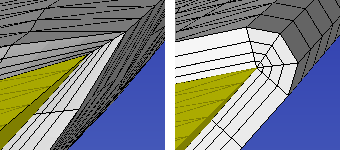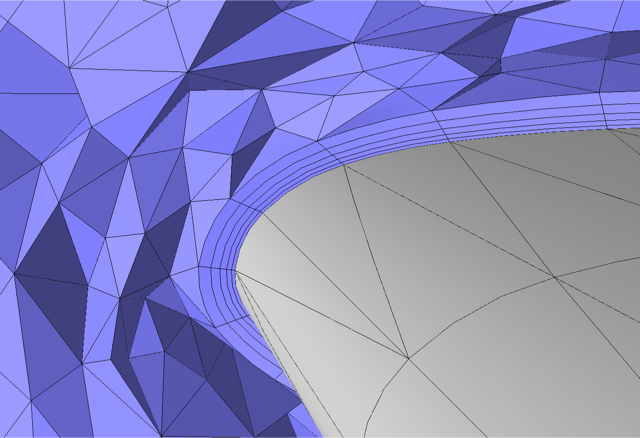
Boundary Layer Meshing
Overview
Boundary layer meshes are semi-structured grids grown from the surface. They are most often used in CFD analyses to resolve high gradients of temperature or momentum normal to a surface, but are useful for any type of problem where there is a strong gradient in the solution normal to the surface.
The boundary layer mesher is capable of producing highly anisotropic layered elements in excess of 106 : 1. It is fully automatic and is tightly integrated with the rest of our meshing capabilities.
Capabilities:
- 2D or 3D boundary layers
- Complete control over element height distribution
- Tetrahedral, wedge, or hexahedral boundary layer element
- Blend elements around corners
- Anisotropic size gradation from the top of the boundary layer to the unstructured mesh
- Aspect ratio cutoff control
- Conformity angle control (angle at which boundary layers conform or peel away from model boundaries)
- Automatic intersection detection and adjustment
- Smoothing of boundary layers in model corners
- Creation of mapped 2D boundary layers
Anisotropic Grading
In the left image, grading is not applied, therefore transition to the larger area size is immediate. On the right, gradation is applied so the transition to the larger size is more gradual.




